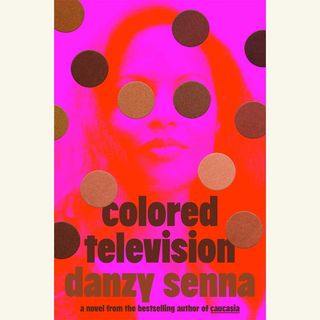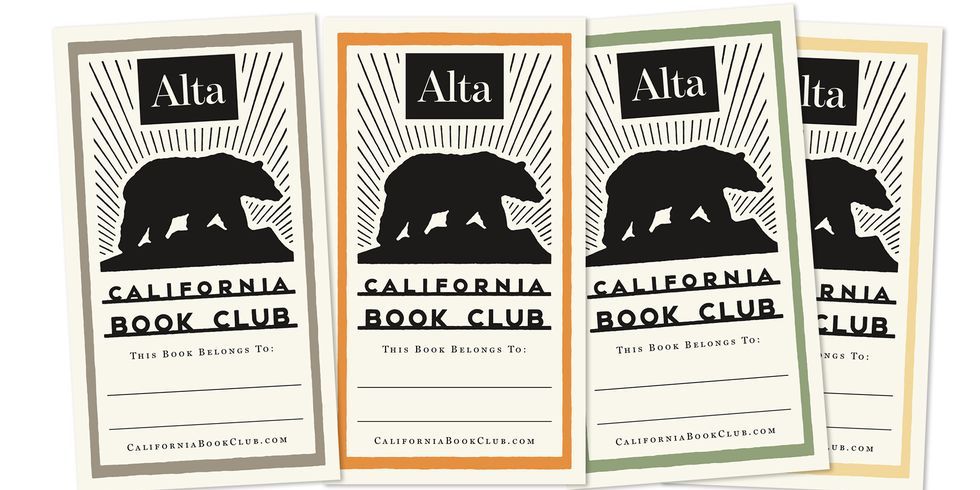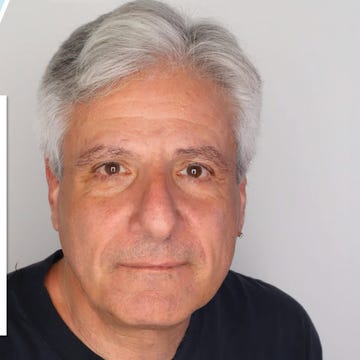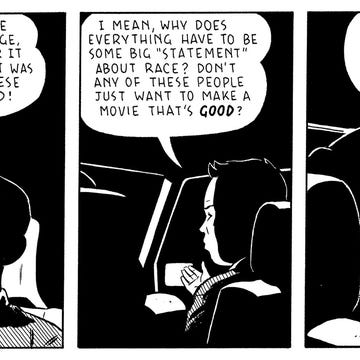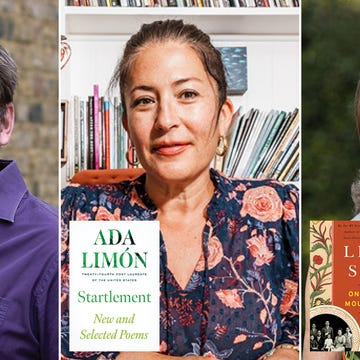The gorgeous multiplicity of literary ventures and institutions in California—their imagination, verve, and entrepreneurial spirit—is too often elided from accounts of the state. I asked four Alta Journal and California Book Club contributors with absorbing new books out this year—Elizabeth Gonzales James, Gary Singh, Ursula Villarreal-Moura, and Bridget Quinn—about their favorite California literary institutions and places.
James’s fantastic second novel, The Bullet Swallower, tells of a curse that spans generations of the fictional Sonoro family that can be traced back to Antonio Sonoro, a Mexican bandido who swallows a bullet while robbing a train during a shoot-out with the Texas Rangers that kills his brother. He vows revenge. Lurking in important scenes is Remedio, a mystical soul harvester who spares Antonio during babyhood but later observes in the Sonoros “an ouroboros of cruelty, pride, and privilege endlessly feeding on itself and giving birth to generation after generation of willing sinners.” The bandido’s grandson, Jaime, becomes one of Mexico’s highest-grossing film stars. After learning of his family’s history of evils, Jaime wonders why his generation should be punished because of something that happened prior to his birth. Raising a big, age-old question, Jaime asks his father, “Why give us the ability to be evil in the first place.… Why give us the choice?” James’s book is not only emotionally involving but philosophically astute. It’s narrated with irony and a canny awareness of the problematic nature of the western as a genre—even as it revels in the fun action to be had within its form and subverts its reliance on racism and colonialism.
James is the kind of novelist who maintains a vibrant relationship to literature and other writers. “I love the Racket reading series in San Francisco,” she said. “It was started by Noah Sanders in 2016 at Adobe Books in the Mission and has grown over the last eight years, moving into the Sycamore in 2021. The Racket is special because readers come from all stages in their writing careers—some share unpublished poems they jotted down between work and family, and some read from their fifth or sixth published book. Each reading is organized around a theme—pets, perhaps, or just desserts, or light. I was lucky enough to read at the Racket many times when I lived in the Bay Area, and I’ve made wonderful friends through their network of readers and fans. I even know two people who met, fell in love, and got married through the Racket! They publish an online literary magazine now too and are a real S.F. literary institution.”
Journalist and lifelong Quakes fan Singh has released a swift, strongly felt, and comprehensively researched historical survey, The Unforgettable San Jose Earthquakes: Momentous Stories On and Off the Field. The multigenerational family of a soccer team, as Singh conceptualizes it, began in 1974 when Milan Mandaric and Dick Berg recognized San Jose’s potential and started the Quakes. As Singh recounts, it was then a city of fruit canneries that had no name recognition outside the state. Organized as a series of chronological capsules about the team’s seasons and players, the book is an eminently enjoyable record of the soccer team’s happenings, as well as an insider’s account of San Jose’s place in the American sports landscape before there was widespread recognition of that moniker turned metonym, Silicon Valley. Contemporary soccer fans will recognize in the book another Quakes fan, Brandi Chastain, who was inspired to play soccer during childhood by the Quakes and her professional role model, one of its well-known players, George Best, who struggled with addictions but also participated in youth soccer training. As Singh puts it, “The local press had never seen anyone that famous give the city the time of day. And they ate it up.”
Singh shared that one of his favorite literary institutions is sometimes a source for his smart, fascinating columns at Metro Silicon Valley, where he’s been writing a range of deep dives and commentary for 20-odd years. He noted about the Dr. Martin Luther King, Jr. Library, “Just over 20 years ago, the San Jose Public Library merged with the San Jose State University Library, creating what was then a unique project in the United States.… Hundreds of my newspaper columns for San Jose’s alt-weekly, in addition to countless other stories, have originated with bent esoteric research enabled by this eight-story building.… In the public-library section, the California Room on the fifth floor is a deep rabbit-hole repository for state and local history.… These materials were never intended for use in a literary sense, but they’ve generated so many ideas in terms of how a columnist traverses the memories of his hometown and contemplates how the temporal landscape of San Jose merges with the physical landscape. Ghosts become easy to trace.”
Dedicated to women at large, Like Happiness, by contributor Villarreal-Moura, is an elegant and thought-provoking debut novel. A working-class Tejana bibliophile, Tatum Vega, is a fish out of water at a very white, affluent private college in the Northeast. During her time there, she writes a fan letter to a legendary, older Puerto Rican author, Mateo Domínguez, known for his fictional title Happiness. As the novel begins, however, we’re in a moment when he invites her to a martini date after his reading, and she is anticipating sleeping with him. Following the fan letter, we learn, she found herself in a yearslong seeming best friendship with him—a relationship complicated by romantic feelings, sapiosexual relations, and queer sexuality—not to mention what he represents to her about a sophisticated, moneyed world of art and literature, which she doesn’t feel herself part of. In the novel’s present, Tatum is an American expat working for a museum in Chile who is contacted by an investigative journalist about Mateo’s sexual misdeeds toward another woman in the course of the #MeToo movement. Tatum denies having similar experiences with Mateo, but talking to the journalist stirs memories that suggest otherwise. This is an astute, important, and class-savvy psychological portrait of a woman undergoing the excavation of painful memories that so many women underwent during #MeToo.
Villarreal-Moura told me that her favorite California literary spot is Bookshop Santa Cruz: “My mother-in-law introduced me to the bookstore over a decade ago. I immediately loved the atmosphere of the place and the booksellers’ friendliness. Over the years, my mother-in-law has sent me books she purchased for me there, and even though I’m not in California, I feel a keen connection to the shop and that community.”
This spring, Quinn, a frequent contributor and thoughtful art historian, published Portrait of a Woman: Art, Rivalry, and Revolution in the Life of Adélaïde Labille-Guiard, a sensitively drawn biography of an overlooked artist who became an official portraitist prior to the French Revolution. Labille-Guiard created a maternal lineage for other female artists of her time. She was an advocate for the rights of female artists and painted two women—life-size—into the Académie Royale, which had gender quotas, among her many other bold moves. Labille-Guiard did not leave writings of her own behind, but much is intelligently extrapolated in these pages. Another prominent French female artist of the time from whose memoir Quinn presents ample excerpts, Élisabeth Vigée-Lebrun, was often cast as her rival (and, indeed, helped in Labille-Guiard’s erasure). But Quinn argues for a more nuanced understanding. She presents an impassioned, feminist case for Labille-Guiard’s vital importance to the history of women in art.
Quinn’s love of literature may be as strong as her steadfast dedication to the work of female artists. She said, “Cofounded in 2003 by Carol Edgarian and Tom Jenks in San Francisco, Narrative magazine turns an impressive 21 years old this fall. I’ve depended on Narrative’s free and always-available stories, poetry, and art for most of my writing life. It’s where I first encountered California poets like Natalie Diaz and Javier Zamora and where today I can peek at how novelist R.O. Kwon’s writing day in San Francisco unfolds. With a free library of thousands of works, I love being able to pivot from Dean Rader’s poems responding to the art of Cy Twombly to excerpts from the journals of 19th-century painter Eugène Delacroix, from a classic story by Zora Neale Hurston to a new short story from Molly Giles. Narrative embodies what I admire most in what California brings to the world: refreshing innovation, impeccable quality, and abundant talent.”•
Join us on September 19 at 5 p.m. Pacific time, when Danzy Senna will sit down with CBC host John Freeman and a special guest to discuss Colored Television. Register for the Zoom conversation here, and preorder the book, which will be published on September 3.
EXCERPT
Whet your appetite for Colored Television by reading a passage from early in the novel. We also recommend preordering the book, which will be released September 3. —Alta
WHY READ THIS
Alta Journal books editor David L. Ulin recommends Danzy Senna’s novel, writing that she never lets “any of us—herself, her characters, or her readers—off the hook.” —Alta
WHY I WRITE
Read Senna’s sharp, funny essay on her reasons for writing. She explains, “I write to lay claim. To claim the world as my own.” —Alta
EVENT RECAP
If you missed last Thursday’s CBC gathering with Helena María Viramontes, read the recap or watch the video. —Alta
RECONSTRUCTING A POET’S SENSIBILITY
James Penner reviews Michael Nott’s Thom Gunn: A Cool Queer Life, the “first full accounting” of the complicated life of the queer San Francisco poet. —Alta
WAKEFIELD TWINS
Francine Pascal, author of the still-extremely-popular Sweet Valley High series about twin blond teenagers in a Los Angeles suburb, died recently from lymphoma at age 92. —Los Angeles Times
Alta’s California Book Club email newsletter is published weekly. Sign up for free and you also will receive four custom-designed bookplates.

